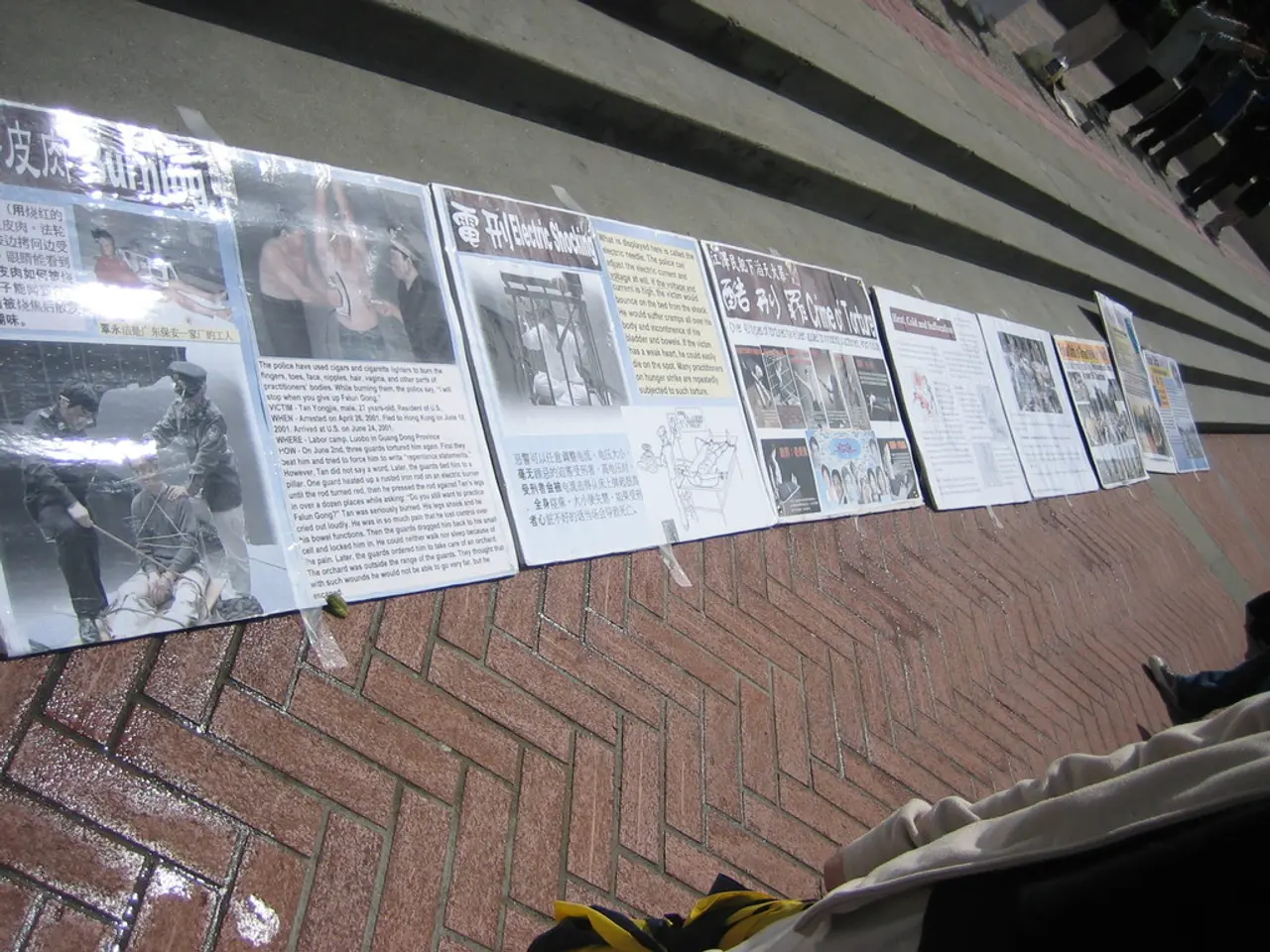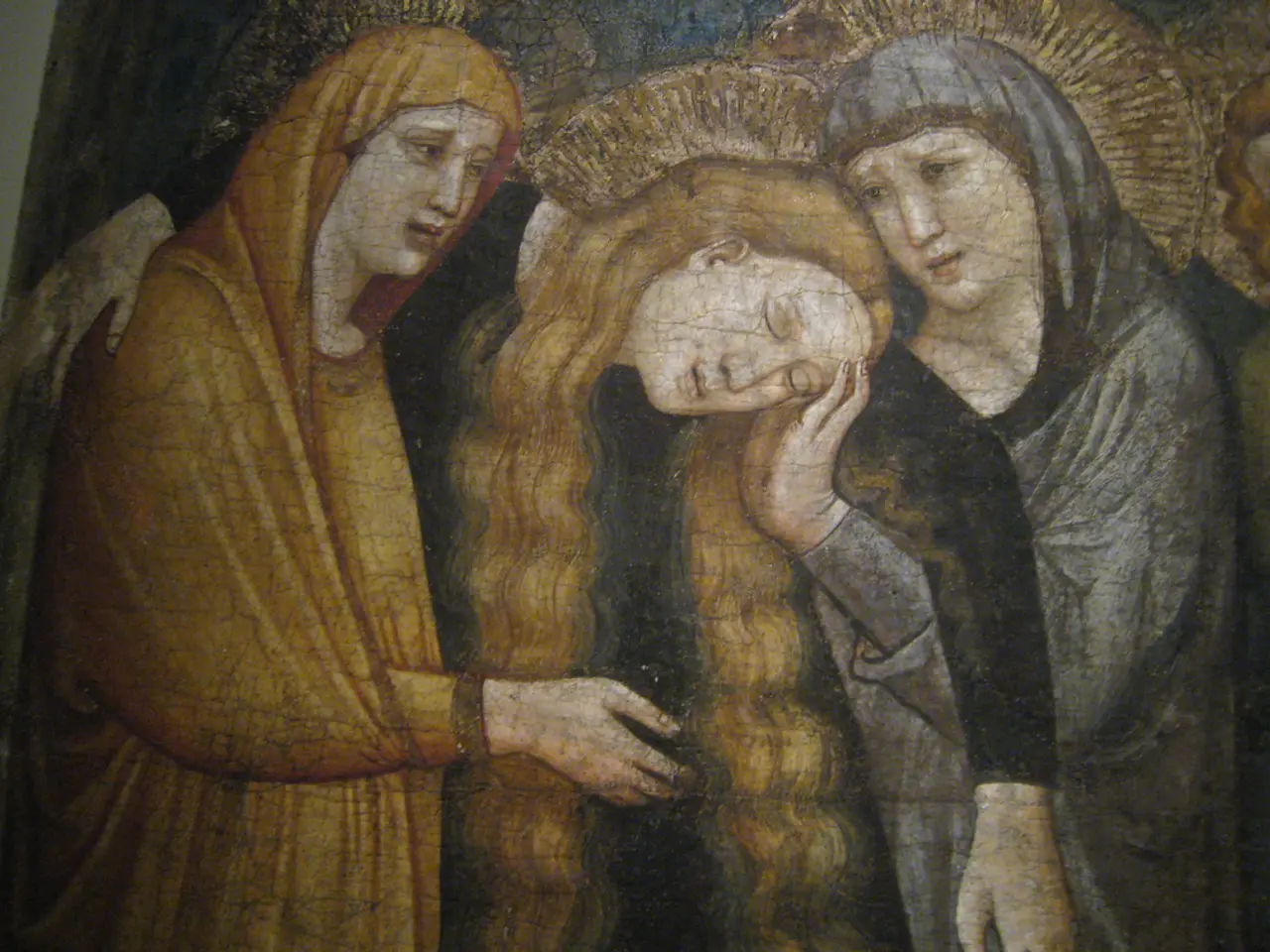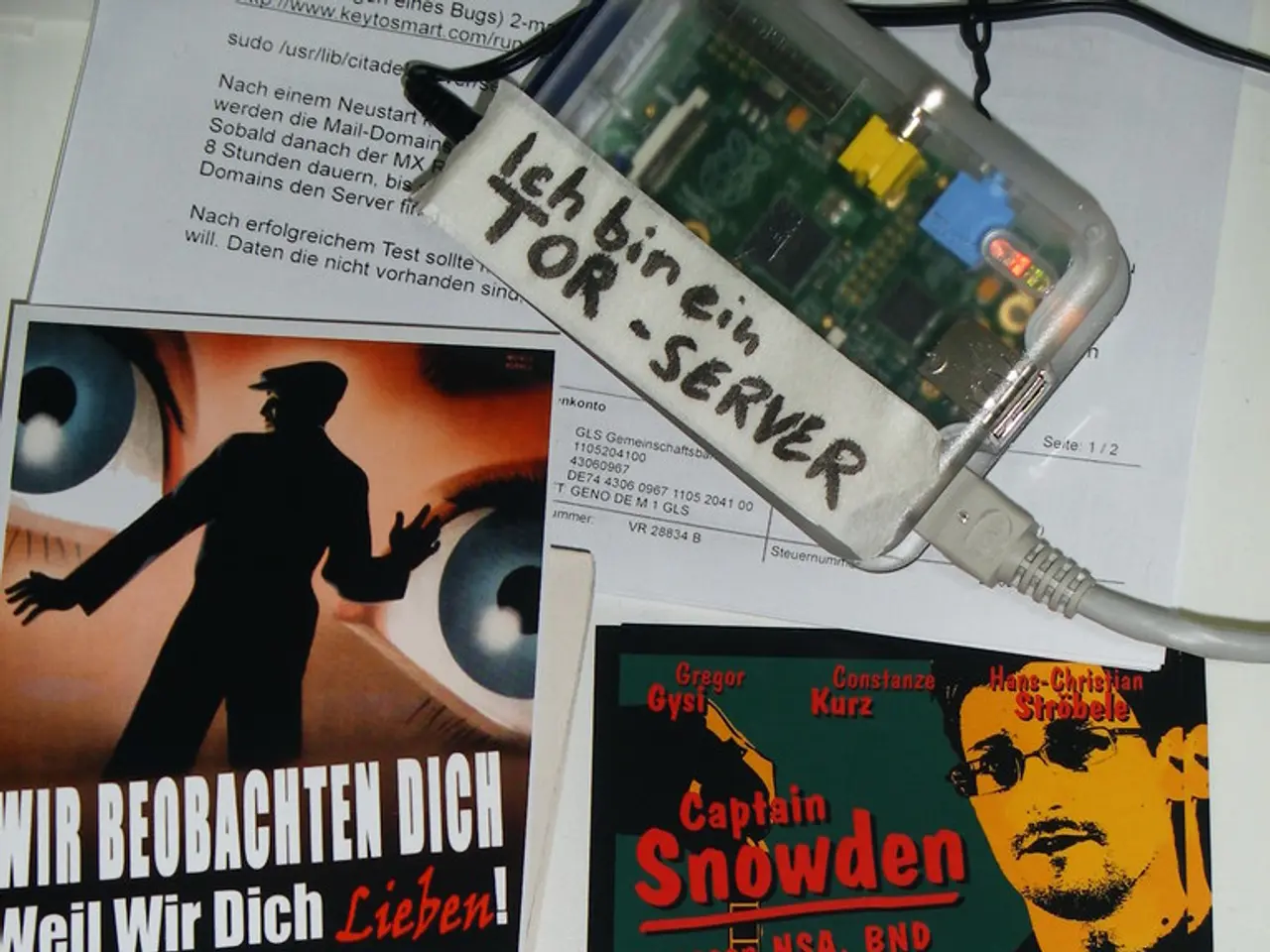Assessment of Poster House's Exhibition, 'Fallout: Atoms for War and Peace'
Poster House, the first museum in the United States dedicated exclusively to the art and history of posters, is currently hosting an intriguing exhibition titled Fallout: Atoms for War & Peace. This thought-provoking display, which is on view in Manhattan through Sunday, September 7th, 2025, offers an exploration of the arguments surrounding nuclear technology in the 20th century.
The exhibition delves into the historical controversy surrounding nuclear power, a topic that has long been a subject of debate due to its dual nature. On one hand, nuclear power promises a potent, clean energy source. On the other, it carries significant risks, including accidents, radioactive waste disposal challenges, and environmental hazards.
Fallout: Atoms for War & Peace showcases how nuclear power and its controversies have been depicted historically through posters. These posters reflect the tension between optimistic propaganda promoting nuclear power for peaceful uses, such as electricity generation and technological progress, and critical or cautionary imagery highlighting fears about nuclear accidents, weapons proliferation, and environmental impacts.
Many of the works in the exhibition reflect the sentiments of the environmental and peace movements that gained momentum in the 1970s and 1980s, especially after incidents like the Three Mile Island meltdown and the Chernobyl disaster. Posters from the Cold War era often oscillated between celebrating atomic energy as a symbol of modernity and warning against its destructive potential, illustrating both the ideological promotion of nuclear technology and the growing public concern and resistance that fueled the anti-nuclear movement.
The exhibition also highlights the role of corporations, such as General Dynamics, in shaping the narrative around nuclear energy. General Dynamics, a major American aerospace and defense corporation known for its role in military innovation and global defense infrastructure, contributed to the broader narrative of atomic optimism by promoting nuclear technology as a symbol of progress and national strength.
However, the exhibition invites viewers to think critically about these narratives. It encourages reflection on how governments, corporations, and citizens have shaped—and continue to shape—the narrative around nuclear energy. The exhibition also features anti-nuclear posters, protest art, and materials from grassroots movements that emerged in response to the dangers associated with atomic energy.
The atomic age began after the bombings of Hiroshima and Nagasaki in 1945, which were a result of nuclear fission. In the post-war years, global powers raced to develop their own nuclear arsenals, igniting the Cold War's nuclear arms race. President Dwight D. Eisenhower's "Atoms for Peace" initiative, launched in the 1950s, aimed to rebrand nuclear power as a tool for economic success.
Despite the early enthusiasm, opposition began notably with reactor projects such as Fermi 1 and the proposed Bodega Bay plant, where environmental and seismic safety concerns led to public resistance and project cancellations. The anti-nuclear movement emerged partly due to serious accidents at experimental reactors, the industry's dependency on federal liability protection (Price-Anderson Act), and increasing awareness of risks associated with nuclear power generation and waste disposal.
In summary, the historical controversy about nuclear power is rooted in its promise of clean energy versus the reality of safety hazards, accidents, waste management issues, and political conflicts. The posters in the Fallout exhibition reflect this ambivalence by visually documenting how nuclear power was promoted for peace and progress, yet also induced widespread fear and protest, encapsulating the complex public discourse over nuclear technology throughout the 20th century.
[1] Environmental history of nuclear power: https://www.britannica.com/topic/nuclear-power-industry/Environmental-impact [2] Price-Anderson Act: https://www.nrc.gov/reading-rm/doc-collections/fact-sheets/price-anderson.html [3] History of the anti-nuclear movement: https://www.britannica.com/topic/nuclear-power-industry/Opposition [4] Cold War posters: https://www.pbs.org/newshour/arts/cold-war-posters-propaganda-and-the-art-of-persuasion
- The multimedia exhibition at Poster House, titled Fallout: Atoms for War & Peace, delves into the historic culture of nuclear power, a subject of continued debate due to its dual nature in promising clean energy and posing significant risks.
- The exhibition presents how nuclear power and its controversies were historically depicted through posters, reflecting the tension between optimistic propaganda and critical or cautionary imagery.
- Science and technology played a significant role in shaping the narrative around nuclear energy, with corporations like General Dynamics promoting it as a symbol of progress and national strength.
- However, the exhibition invites viewers to question these narratives by featuring anti-nuclear posters, protest art, and materials from grassroots movements that emerged in response to nuclear power's dangers.
- Education-and-self-development resources such as the environmental history of nuclear power, Price-Anderson Act, history of the anti-nuclear movement, and Cold War posters can offer further insight into this complex topic.
- Sports, general news, and features articles might not directly relate to the Fallout exhibition, but they provide a well-rounded understanding of the world, offering a balance to discussions on nuclear power and its history.




